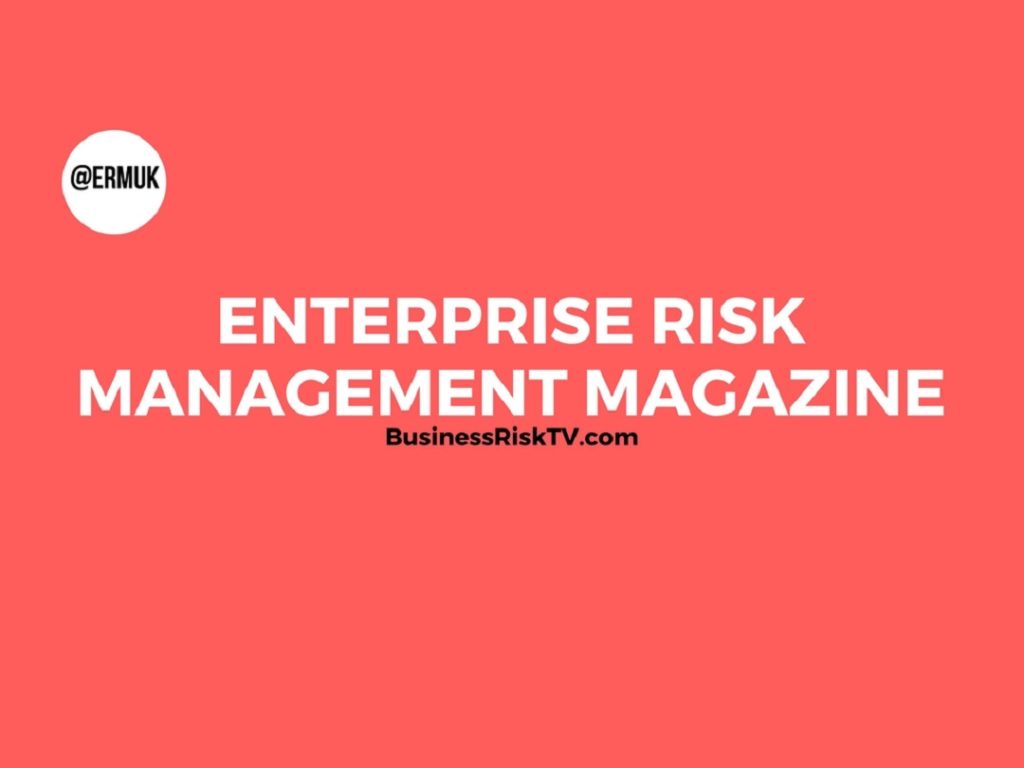Finding Growth in the Face of Risk: Turning Obstacles into Opportunities
“The only constant in life is change,” Heraclitus famously observed. And in the dynamic world of business, change often arrives in the form of risk. Whether it’s a sudden economic downturn, a disruptive new technology, or a global pandemic, unforeseen challenges can throw even the most well-prepared businesses off course. But what if, instead of simply weathering the storm, we could actually leverage these risks as catalysts for growth?
This is precisely the mindset we need to cultivate in today’s volatile business landscape. Rather than viewing risks as threats to be avoided, we must learn to see them as potential springboards for innovation and expansion. By proactively identifying and analysing risks, we can uncover hidden opportunities, adapt our strategies, and emerge stronger than ever before.
This article will explore practical strategies for turning potential risk events into drivers of business growth. We’ll delve into the importance of risk assessment, the art of identifying and capitalising on emerging opportunities, and the crucial role of flexibility and adaptability in navigating uncertain times.
1. The Power of Proactive Risk Assessment:
The journey towards turning risk into opportunity begins with a thorough understanding of the potential threats facing your business. Proactive risk assessment is not just about identifying potential hazards; it’s about gaining deep insights into their potential impact and likelihood.
- Go beyond the obvious: Don’t just focus on the usual suspects like economic downturns or natural disasters. Consider emerging risks such as cyberattacks, supply chain disruptions, and changes in consumer behaviour.
- Embrace a holistic approach: Conduct a comprehensive risk assessment that considers all aspects of your business, including financial, operational, reputational, and strategic risks.
- Involve your entire team: Encourage open and honest discussions about potential risks across all departments.
By conducting a thorough and ongoing risk assessment, you’ll gain a clearer picture of the challenges that lie ahead. This knowledge will empower you to develop robust contingency plans and proactively identify potential opportunities within those challenges.
2. Identifying and Capitalising on Emerging Opportunities:
Once you’ve identified potential risks, it’s time to shift your perspective. Instead of focusing solely on the negative consequences, start asking yourself: “How can we leverage this situation to our advantage?”
- Look for new market niches: A sudden shift in consumer behaviour, for example, might create new demand for products or services.
- Explore new revenue streams: A supply chain disruption could force you to seek alternative suppliers, potentially leading to new partnerships and cost-effective solutions.
- Develop innovative solutions: A cyberattack could be a catalyst for investing in cybersecurity measures, which can enhance your brand reputation and attract new customers.
For example, during the COVID-19 pandemic, many businesses were forced to adapt quickly. Restaurants that relied heavily on dine-in service pivoted to delivery and takeout, while fitness studios transitioned to online classes. These adaptations not only helped businesses survive but also opened up new revenue streams and expanded their customer base.
3. Cultivating a Culture of Flexibility and Adaptability:
The ability to adapt quickly to changing circumstances is crucial for turning risk into opportunity. This requires a culture that embraces flexibility, encourages experimentation, and empowers employees to think creatively.
- Foster a learning environment: Encourage open communication and knowledge sharing across all levels of the organisation.
- Empower employees to take initiative: Encourage employees to identify and propose solutions to emerging challenges.
- Embrace a “fail fast, learn fast” mentality: Encourage experimentation and don’t be afraid to try new things. Even if an initial attempt fails, valuable lessons can be learned.
By cultivating a culture of flexibility and adaptability, you’ll be better equipped to navigate unexpected challenges and seize emerging opportunities.
4. Leveraging Technology to Mitigate Risk and Drive Growth:
Technology plays a critical role in both mitigating risk and identifying new opportunities.
- Invest in cybersecurity measures: Protect your sensitive data from cyberattacks, which can have devastating financial and reputational consequences.
- Embrace data analytics: Use data to gain insights into customer behaviour, identify emerging trends, and anticipate potential risks.
- Automate key processes: Automate repetitive tasks to improve efficiency, reduce costs, and free up resources for innovation.
By leveraging technology effectively, you can not only mitigate risk but also gain a competitive advantage and drive sustainable growth.
5. Building Resilient Business Models:
Building a resilient business model is essential for navigating uncertain times. This involves diversifying revenue streams, building strong relationships with suppliers and customers, and maintaining a healthy financial position.
- Diversify your product or service offerings: Don’t put all your eggs in one basket. Explore new markets and develop new products or services to reduce your reliance on any single revenue stream.
- Build strong relationships with stakeholders: Cultivate strong relationships with your suppliers, customers, and other key stakeholders to ensure your business can withstand disruptions.
- Maintain a strong financial position: Maintain a healthy cash flow and a strong balance sheet to weather financial storms and invest in future growth.
By building a resilient business model, you’ll be better equipped to withstand unexpected challenges and emerge stronger than ever before.
6. The Role of Leadership in Driving Risk-Informed Growth:
Effective leadership is critical for driving risk-informed growth. Leaders must create a vision for the future, inspire their teams, and make tough decisions when necessary.
- Lead by example: Demonstrate a willingness to embrace change and take calculated risks.
- Communicate effectively: Clearly communicate the company’s risk management strategy and the importance of adapting to changing circumstances.
- Empower your team: Empower your team to take ownership of their work and contribute to the company’s success.
By providing strong leadership and creating a supportive environment, you can empower your team to navigate uncertainty and seize emerging opportunities.
7. Continuous Learning and Adaptation:
The business landscape is constantly evolving, and the risks facing your business will change over time. It’s crucial to continuously learn and adapt to stay ahead of the curve.
- Stay informed about emerging trends: Keep abreast of the latest industry trends and technologies.
- Conduct regular risk assessments: Regularly review and update your risk assessment to identify and address emerging threats.
- Continuously improve your risk management processes: Continuously refine your risk management processes to improve their effectiveness.
By embracing a culture of continuous learning and adaptation, you can ensure that your business is well-positioned to thrive in an uncertain world.
8. Case Studies: Turning Risk into Opportunity:
- Airbnb: During the 2008 financial crisis, Airbnb founders Brian Chesky and Joe Gebbia were struggling to make ends meet. They had a brilliant idea for a unique accommodation platform, but they lacked the funding to launch it. To raise funds, they turned their apartment into a bed and breakfast, offering guests homemade breakfast and unique experiences. This unconventional approach not only helped them generate revenue but also provided valuable insights into the evolving travel market.
- Netflix: Netflix initially started as a DVD rental service. However, with the rise of streaming services like YouTube, Netflix faced the threat of obsolescence. Instead of resisting the change, Netflix embraced it. They invested heavily in streaming technology, transitioning from a DVD rental company to a global leader in online entertainment. This bold move not only saved Netflix from extinction but also propelled it to unprecedented success.
These case studies demonstrate the power of turning risk into opportunity. By embracing change, adapting to new realities, and leveraging unforeseen challenges, businesses can not only survive but also thrive in even the most turbulent times.
9. Conclusion:
In today’s dynamic and unpredictable business environment, viewing risk as an opportunity is no longer a luxury; it’s a necessity. By proactively identifying and assessing potential threats, cultivating a culture of flexibility and adaptability, and leveraging technology and innovation, businesses can not only mitigate risk but also unlock new avenues for growth.
Remember, the only constant in business is change. By embracing this reality and adopting a proactive and opportunistic approach to risk management, you can not only weather the storm but also emerge stronger and more resilient than ever before.
10. Call to Action:
Now it’s your turn. How can you turn potential risks into opportunities for your own business? Take some time to reflect on the challenges facing your organisation and brainstorm ways to leverage those challenges to your advantage. Don’t be afraid to think outside the box and explore new possibilities. The future of your business may depend on it.
This article provides a framework for turning risk into opportunity. By implementing these strategies and maintaining a proactive and adaptable mindset, you can navigate uncertainty, drive sustainable growth, and ensure the long-term success of your business.
Disclaimer: This article is for informational purposes only and should not be construed as financial, legal, or investment advice.
Get help to protect and grow your business faster
Find out more about Business Risk Management Club Corporate Membership
Subscribe for free business risk management tips reviews and money saving ideas
Read more business risk management articles and watch videos for free
Relevant hashtags :
- #BusinessGrowth
- #RiskManagement
- #Innovation
- #Resilience
- #Opportunity
- #BusinessRiskTV
- #ProRiskManager
Read more:
- How to leverage business risks for growth
- Risk management strategies for business growth
- How to find opportunities in uncertain times
- Building a resilient business model through risk management
Finding Growth in the Face of Risk: Turning Obstacles into Opportunities







